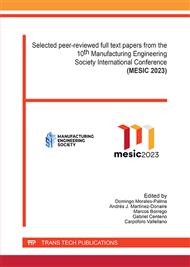p.61
p.70
p.79
p.89
p.99
p.109
p.120
p.129
p.140
Ductile Fracture Analysis in Nakazima vs. SPIF Tests
Abstract:
The Forming Limit Curve (FLC) shows the limit combinations of principal strains on the sheet surface that can be successfully achieved before necking appears. Above the FLC, Atkins in 1996 proposed the existence of an unstable region where localized necking develops before reaching at the Fracture Forming Limit (FFL). Only the methodology for the evaluation of the FLC is covered in an international standard ISO 12004-2, where the basis of the tests consists of stretching of a previously clamped sheet blank over a Marciniak or Nakazima punch, providing an almost linear strain path in the sheet surface of the specimen. On the contrary, in single-point incremental forming (SPIF) processes, the hemispherical-shaped tools usually employed are relatively small compared to the general dimension of the specimen, producing a highly nonlinear strain path derived from both the incremental nature of the process and the severe curvature imposed by the small radii of the punches used in the forming process.Many authors have observed fracture strains in SPIFed samples well above the FFL obtained with Nakazima tests under the ISO 12004-2 standard. At the macroscopic level, the reason for this behaviour has been explained mainly based on the effect of bending and the difference in the stress triaxiality level, among others. This research analyzes the initiation of ductile fracture in Nakazima and SPIF specimens under a scanning electron microscope to elucidate the reasons of those differences at the microscopic level.
Info:
Periodical:
Pages:
99-105
Citation:
Online since:
October 2023
Price:
Сopyright:
© 2023 Trans Tech Publications Ltd. All Rights Reserved
Share:
Citation:



